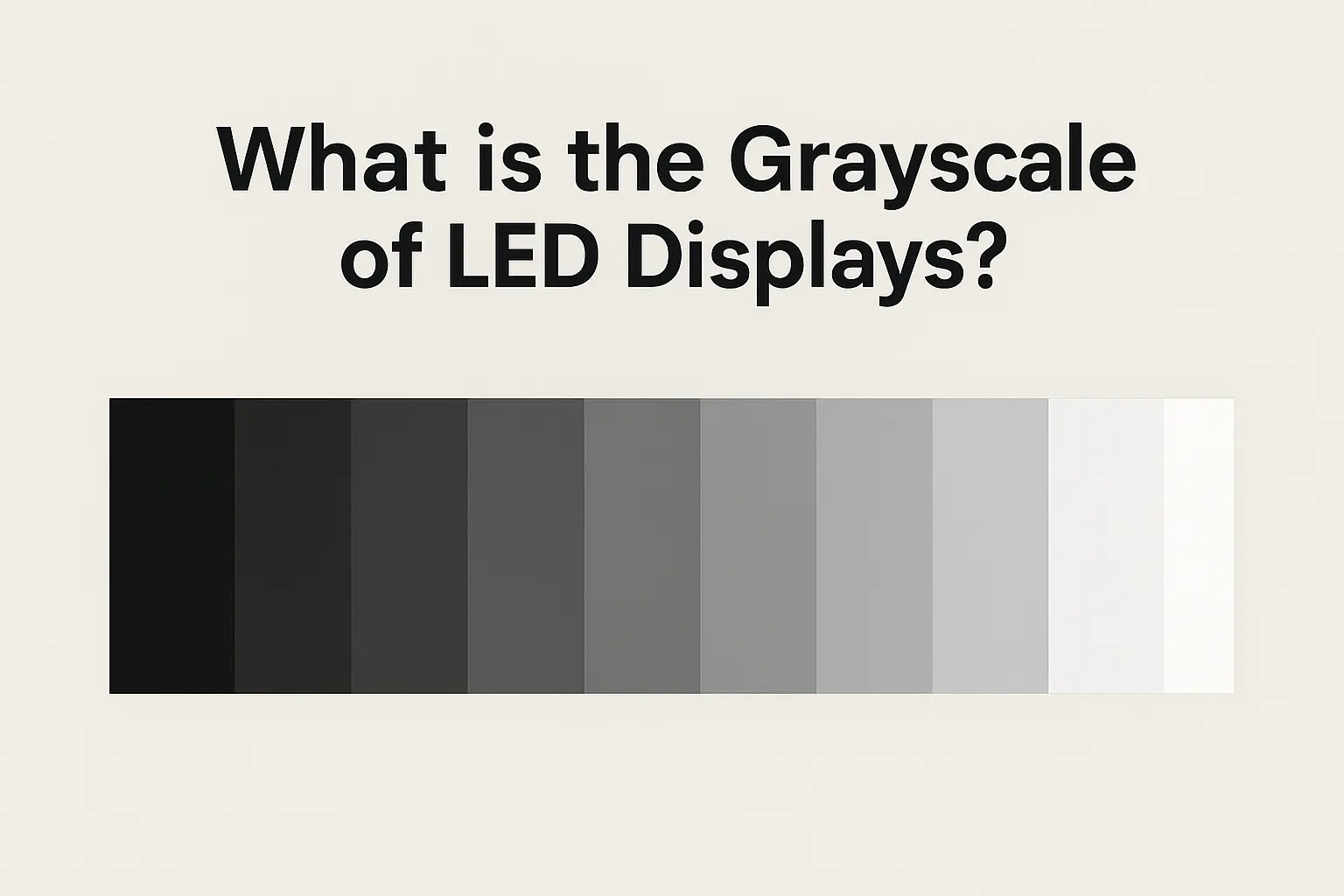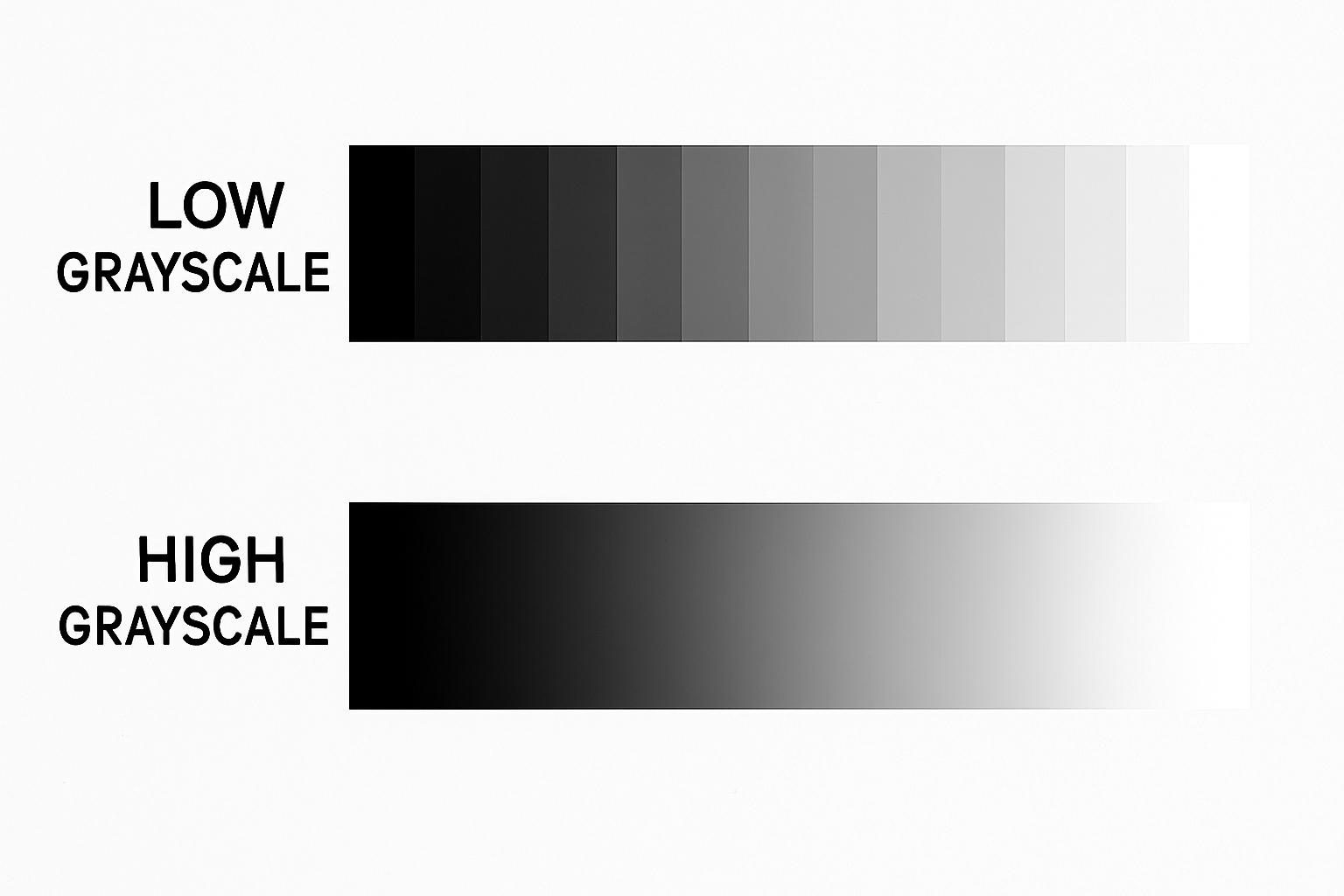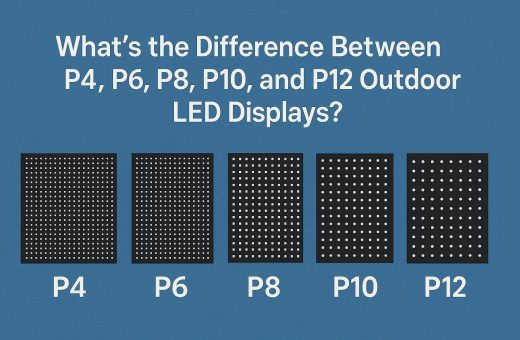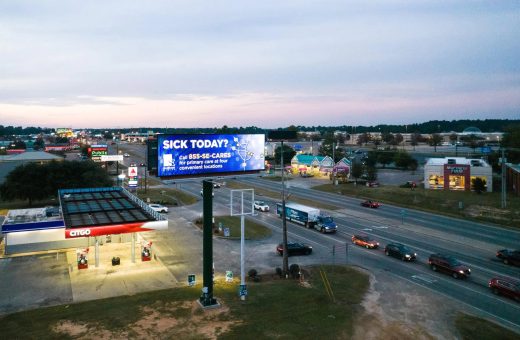Table of Contents
What is the grayscale? Imagine a black and white photograph. The depth and richness of that image don’t just come from black and white; they come from all the shades of gray in between. In the world of LED displays, this concept is known as grayscale, and it’s a critical factor in determining the quality of the image you see.
Then, what does grayscale mean technically, and how can you choose the best grayscale for your LED display projects? In this article, Chainzone will try to cover it all for you!
What is the Grayscale of LED Displays?
Grayscale refers to the number of shades of gray that an LED can produce. While a display’s primary colors are red, green, and blue (RGB), the ability to produce a wide range of colors is determined by its grayscale level. Each grayscale level represents a step in brightness intensity, enabling a screen to show more subtle details and smoother transitions.
The grayscale level is often expressed in bits, for example, 8-bit, 10-bit, or 16-bit. An 8-bit system means the display can produce 28 = 256 different shades for each color channel (red, green, and blue). It allows 256 distinct brightness levels from black to white, which is ideal for basic display applications providing acceptable color gradation and visual quality.
Similarly, a 10-bit system means the display can produce 210 = 1024 shades per channel. This allows for finer gradation, smoother transitions, and richer visual effects compared to 8-bit displays.
Is the Higher the Grayscale, the Better?
While it might seem that a higher grayscale is always better, that’s not necessarily the case. The human eye can only perceive limited shades, and for many applications, a very high grayscale level is not only unnecessary but can also be more expensive.
A standard 8-bit grayscale is usually sufficient for many indoor advertising displays and simple digital signage. However, for high-end applications like television studios, control rooms, and large-scale video walls used for live events or concerts, a higher grayscale level is essential.
These environments require displays that can render intricate details and smooth color transitions, especially in low-light conditions. A 16-bit or even 18-bit grayscale is often preferred to ensure a premium visual experience.
Grayscale vs. Brightness and Refresh Rate: Difference Explained
It’s easy to confuse grayscale with other key display metrics like brightness and refresh rate, but they all serve different purposes.
- Grayscale is all about color depth and the number of shades a display can produce. It dictates the richness and subtlety of the colors you see.
- Brightness is the intensity of the light emitted by the display. It’s measured in nits or candelas per square meter (cd/m2). A higher brightness allows the display to be visible in bright sunlight or other high-ambient light environments.
- Refresh rate is how many times per second the display’s image is refreshed. A higher refresh rate (e.g., 3840 Hz or 7680 Hz) results in smoother video playback, reducing motion blur and flickering. It’s particularly important for fast-moving content like sports or live concerts.
While each of these factors is important for a quality display, they are not interchangeable. A display can be very bright but have a low grayscale, resulting in a vibrant but visually simplistic image. Conversely, a display can have excellent grayscale but a low brightness, making it look dull in bright settings. Achieving the best visual performance requires a careful balance between these factors.
Why Choose Chainzone LED Displays?
At Chainzone, we deliver top LED display solutions for various industries, from broadcast studios and control rooms to retail and DOOH advertising. Our key product advantages include:
- 16-bit grayscale for rich color depth and smooth image transitions
- 10,000 nits brightness for clear visibility even in direct sunlight
- Ultra-high refresh rate up to 7,680 Hz for flicker-free viewing and seamless motion display
- Flexible pixel pitch options (P1–P17) to fit different application needs
- Energy-saving LOB technology, reducing power consumption by up to 80%
- Robust protection and durability with ratings up to IP67
With these features, Chainzone LED displays deliver outstanding image quality, high reliability, and excellent value for businesses looking to elevate their visual communication.
Conclusion
In conclusion, understanding the grayscale of an LED display is crucial for anyone looking to invest in quality visual solutions. A high grayscale level is a cornerstone of a superior image, enabling smooth, vivid, and lifelike visuals.
Chainzone is committed to providing you with the best display technology available, and our focus on high grayscale is just one of the many ways we ensure our products meet our clients’ needs. To learn more about how Chainzone LED displays can support your projects, feel free to reach out to our team—we’re here to provide tailored solutions for your needs!








